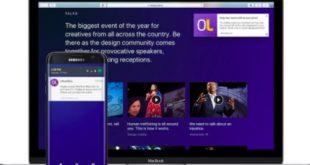
The FIFA World Cup is less than 45 days away; football fans are all abuzz and ready to root for their favorite teams as the world descends on Brazil for what surely promises to be equal parts mayhem and magic. Part of the magic will certainly be the wholesale application of mobile devices, big data and location enabled wizardry that will help connect fans to scores, wagering companies to players and the world to an abundance of news and scores, on the go and on a moment’s notice.
Let’s get straight to it: the World Cup is an international melting pot and the most watched single sporting event in the world. With over 75 Million viewers and 3+ Million spectators in the arenas, the World Cup represents 204 national entries—language is terribly important as a vehicle to achieve relevance in messaging.
Mobile & Language
Wagering companies stand poised to make substantial profits if they take the time to understand their players, analyze mobile data and hyper target them with contextually significant betting options and news to connect them to the games and teams.
Step 1 – Speak a common tongue. Mobile devices offer app publishers the chance to determine the language setting of the device.
Step 2 – Have a conversation when the players are awake. Sending messages during local time zones are absolutely critical. It’s important to know not only when the games are happening, but be aware of where the user is and in which time zone. A message sent to someone on the ground in Brazil from Germany will require German based language content and Brazilian time zone delivery. This is a very different offer from one sent to a German citizen living in Munich
Step 3 – Know and analyze the preferred team for each player. Delivering a legible message in the right language and at the right time is meaningless if you’re offering bets and content for the wrong team.
Step 4 – Analyze and leverage app analytics to determine player preferences. How many times do players check the scores? Do they routinely spend time reading team news? Do they respond to push notifications about news alerts or score alerts more? Data such as this helps you hone in on the right message for the right player at the right time.
Step 5 – Don’t overdo it. Not everyone will be engaged around the clock all the time, at every waking moment of the day (and a few slumbering ones). Depending on your etymological dictionary of choice, fan is the root of fanatic. By that logic we can assume all fanatics are fans, but not all fans are fanatics. Know your audience and adjust messaging cadences based on previous interaction with notifications, in-app alerts and other forms of app centric messaging. Carpet-bombing your entire user base with offers and calls to action will only appeal to a subset, not every player on the books.
The Second Screen Phenomenon
Mobile devices are little handheld interactive televisions. In days of analog yore, it wasn’t uncommon to see a fan(atic) sitting in the stands at a match wearing an ear piece to keep tabs on other games, or even hear the announcers deliver insights about players and clubs in the game he or she was currently viewing. This was 2nd screen viewing before there ever was a 2nd screen.
The modern equivalent in today’s world is watching a game on the television and viewing another match on a mobile phone, tablet, laptop or even picture within picture. The fact is that today’s viewers are multi-tasking to their heart’s content and absorbing as much football related content as they can possibly shove into their eyes and ears.
To ensure maximum coverage, wagering companies need to deep link their in-app content and push notifications directly to the bet slip with the wagers pre-populated. Games move quickly; relying on your players to take the time to fill out forms, or find them in the first place is most certainly a missed opportunity.
Location vs. Geo Location
Not all locations are the same. Let’s keep in mind that scores of travelling football fans will most likely not have access to cellular data. Sending offers and messages based on cellular alone will result in uncertainty and confusion. It’s important to compare the GPS location to the IP of the phone from the last login. With numerous fans choosing not to spend money on roaming charges abroad, there will invariably be numerous people using local Wi-Fi networks to get their second screen fixes, placing bets and checking scores. Understanding the difference and relative location of message recipients based on these two forms of geo location are critical to delivering highly targeted and relevant messaging. Let’s face it, if you miss it this time, you’ll have to wait another four years to get it right.
____________________________
Len Shneyder – Senior Marketing Manager – OtherLevels








